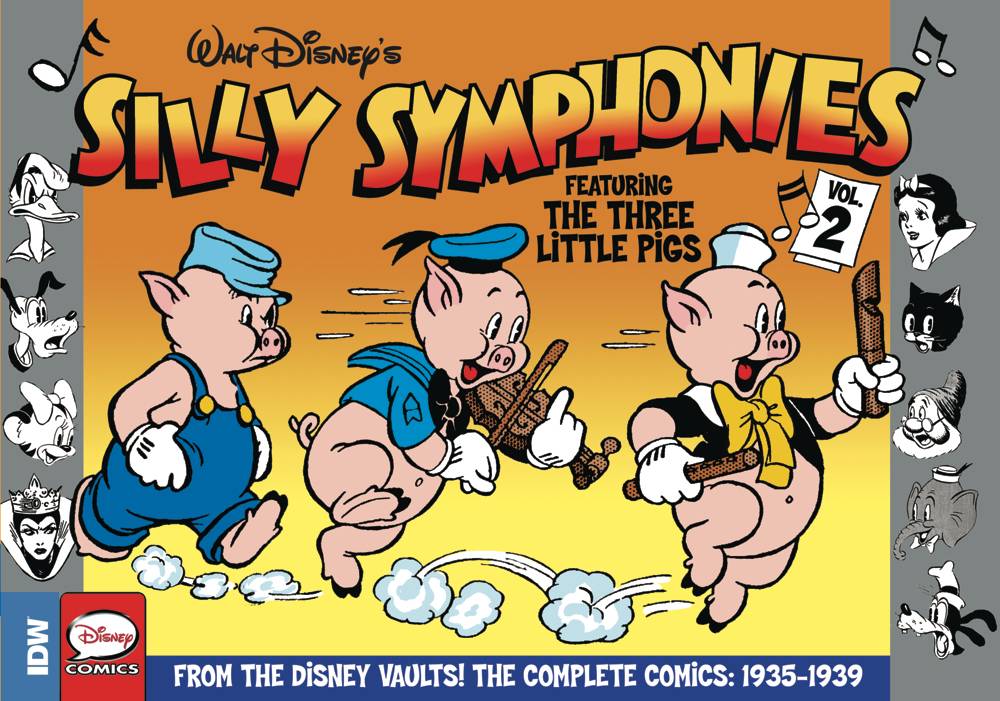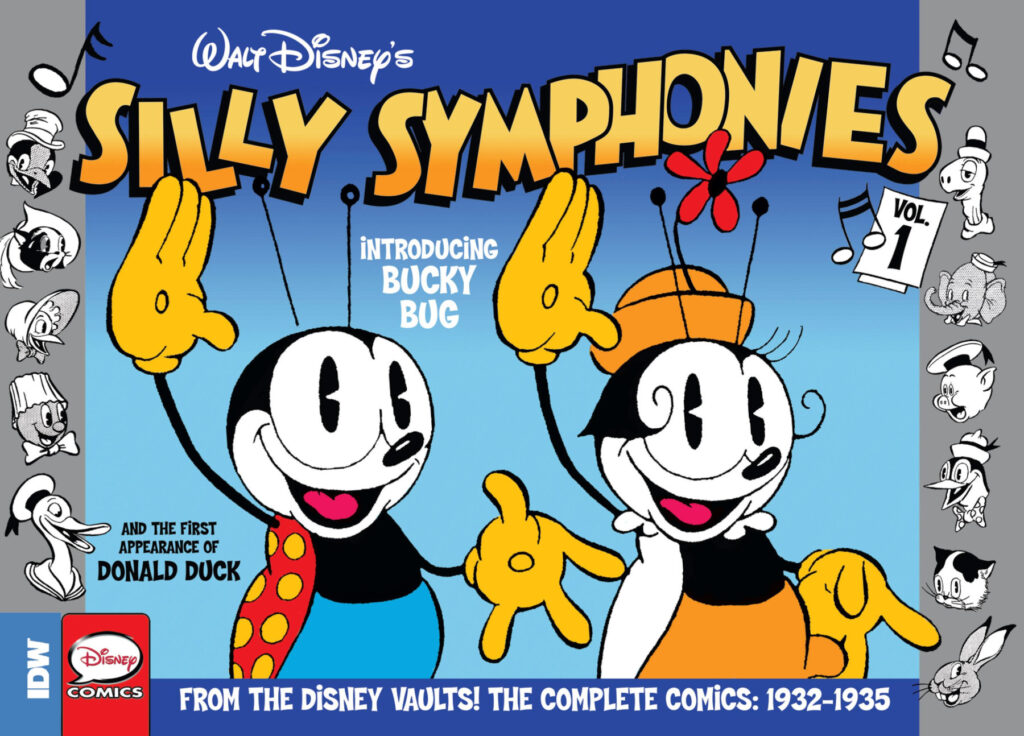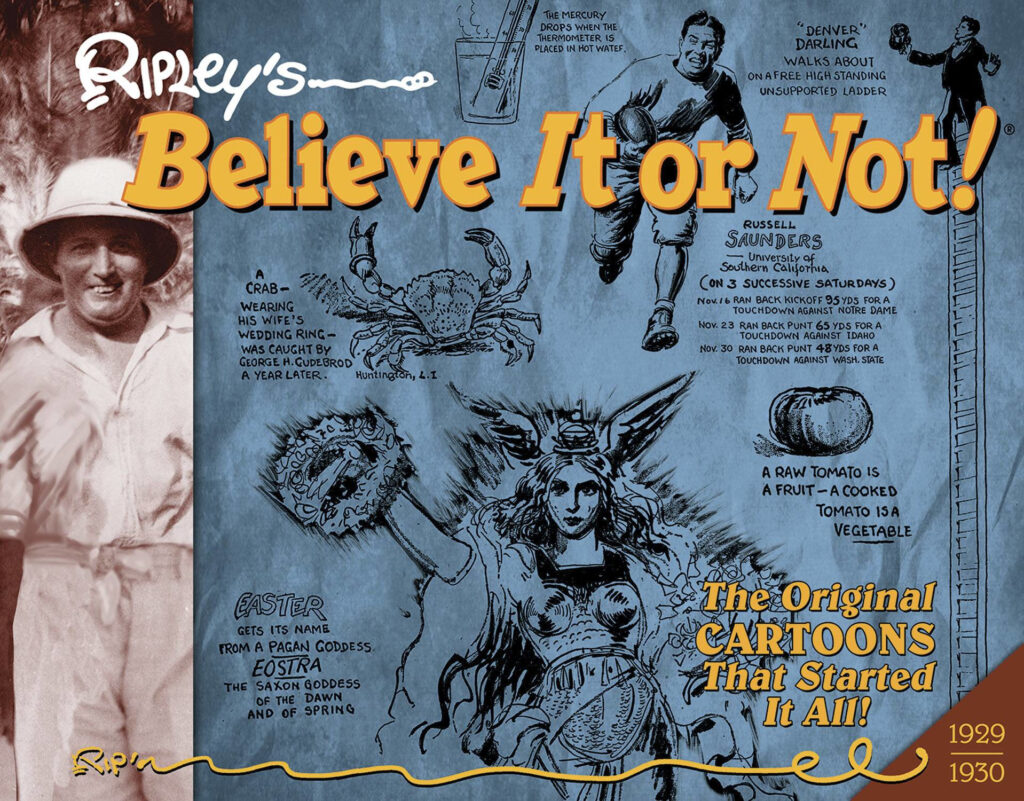Axel’s back and this time he’s not taking any chances! Meanwhile, the lives of gangster Nick Gatt and crusading District Attorney John Tecum become inextricably linked. Plus, Annie crosses paths with the selfish movie star Pete LaPlata, his selfless elderly parents, his discarded wife Peggy, and his neglected son Billy. It’s high emotional drama leading into the return of the very much alive “Daddy” Warbucks, now converting his factories for the coming war…all in Volume Nine of The Complete Little Orphan Annie. Including dailies and Sundays from February 29, 1940 through November 23, 1941.
- Library Of American Comics, June 2013
- ISBN 978-1-61377-575-2
- 11″ x 8.5″, 296 pages, hardcover
- $49.99 USD
- Order online: Amazon, eBay
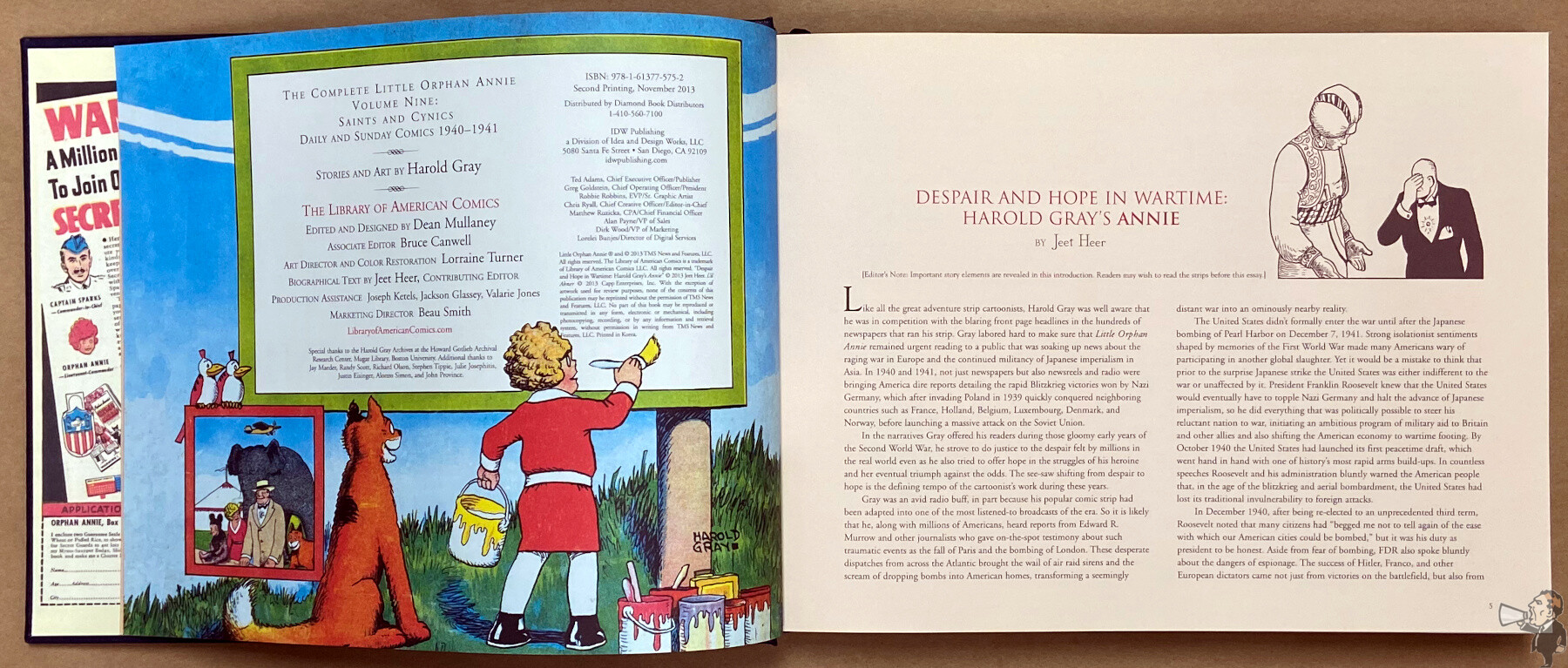
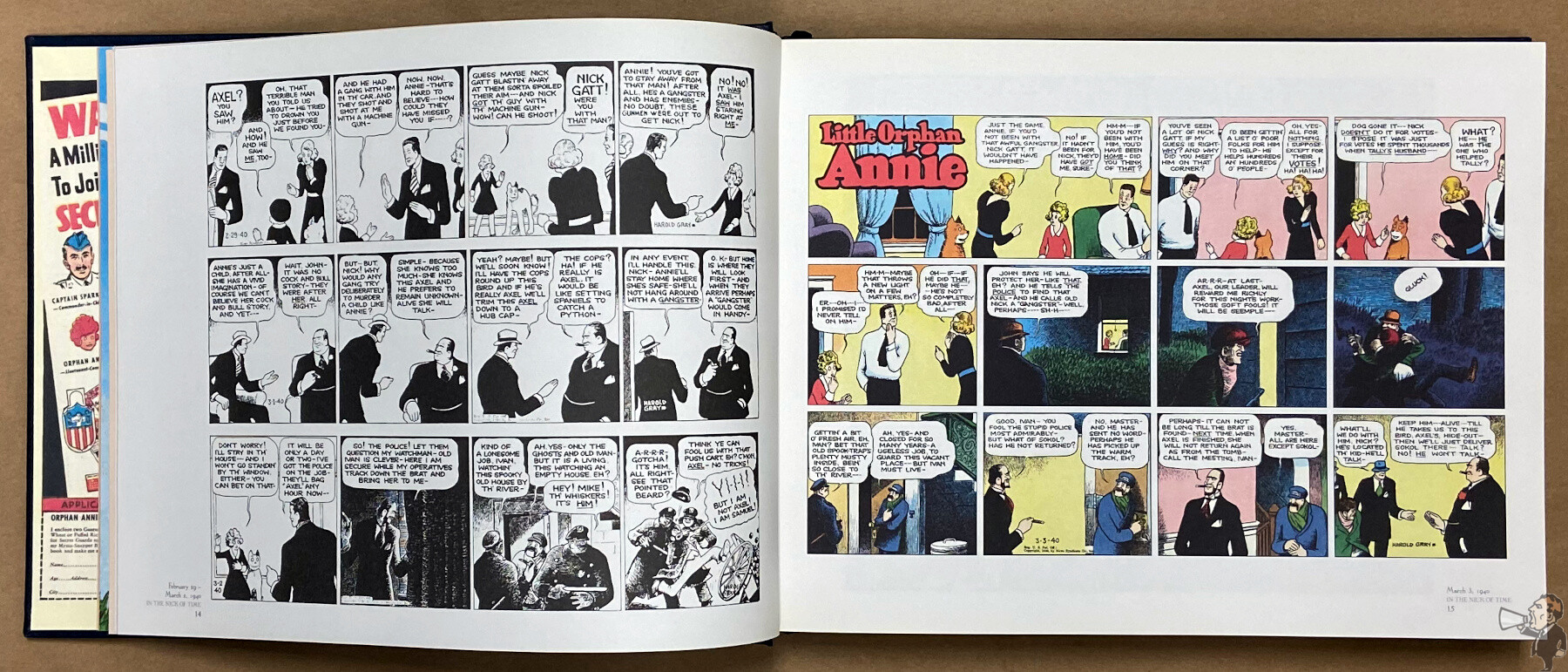
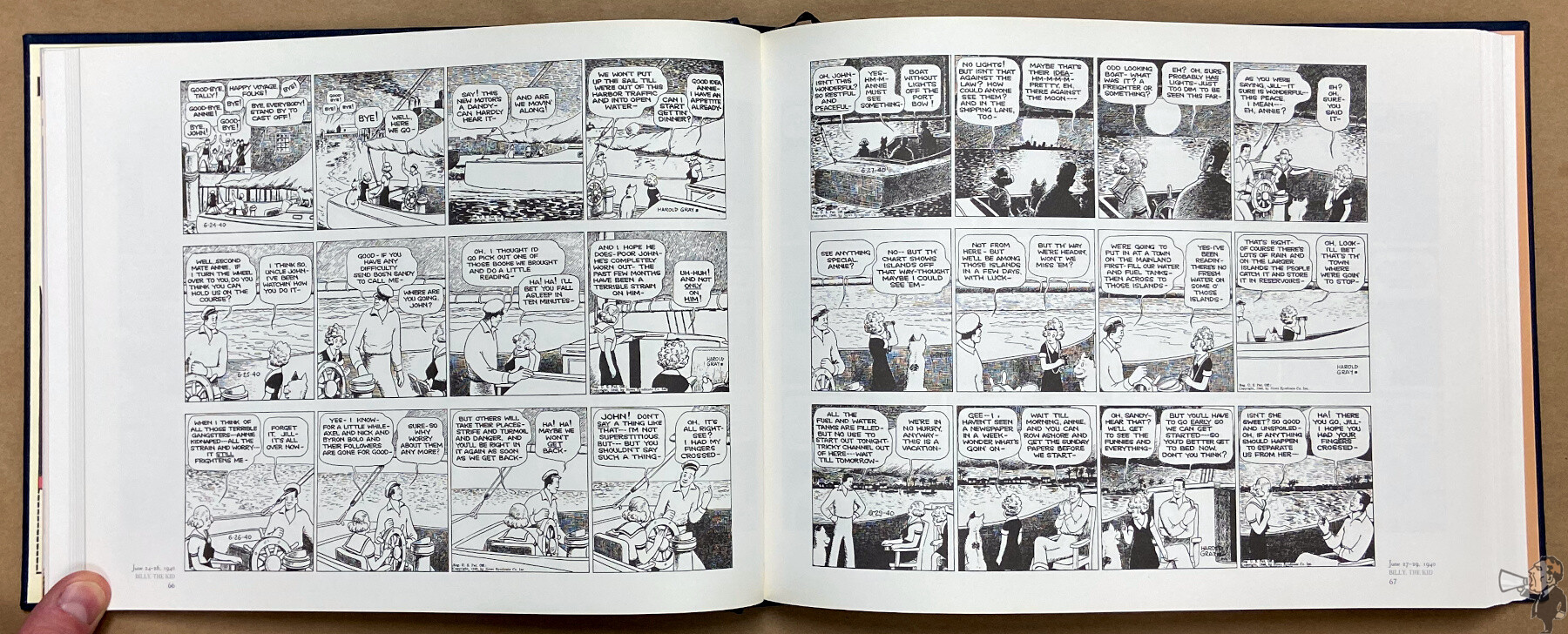
This volume kicks off with a doozy as the showdown between Axel and Nick Gatt brings this storyline to a conclusion. Annie continues to live with the Tecums but it’s all about Axel’s nefarious scheme to bring down America and “gangster” Gatt working to thwart him. Gray draws out the suspense beautifully as Annie is kidnapped and rescued, only to be sidelined. A new twist is added with Byron Bolo but it fizzles out and we’re only told of Gatt and Bolo’s fate off-panel; a very unsatisfactory ending.
Annie goes on a sailing trip with the Tecums and while she’s onshore there’s a tornado and the boat is gone. Annie then wanders through a swamp to get to a road, gets picked up by a truck driver who takes her 1000 miles, and then she stumbles into staying with the elderly Slaggs. Plus Annie befriends Sam the tailor who always has a kind and reflective word. It’s a fast transition for chapter two and again Gray drops the characters who we’ve been invested in for months.
An element of faith was introduced in chapter two and it continues in chapter three. Annie is shown returning from Sunday School, and Sam quotes the Bible. All the details about Peg are revealed, just as we expected, and Peter La Plata is put in his place. It’s a classic “feel good” wrap-up as only Gray can provide, where doing the right thing pays off. Acts of kindness have been building up with the cast and the reader is inspired, just as the strip hits Christmas 1940.
“Daddy” reappears in chapter five and immediately begins manufacturing war materials and charging only his cost. Punjab and The Asp appear as well. This chapter is short on story and long on nationalism and patriotism as Gray lays out his feelings regarding the war in Europe.
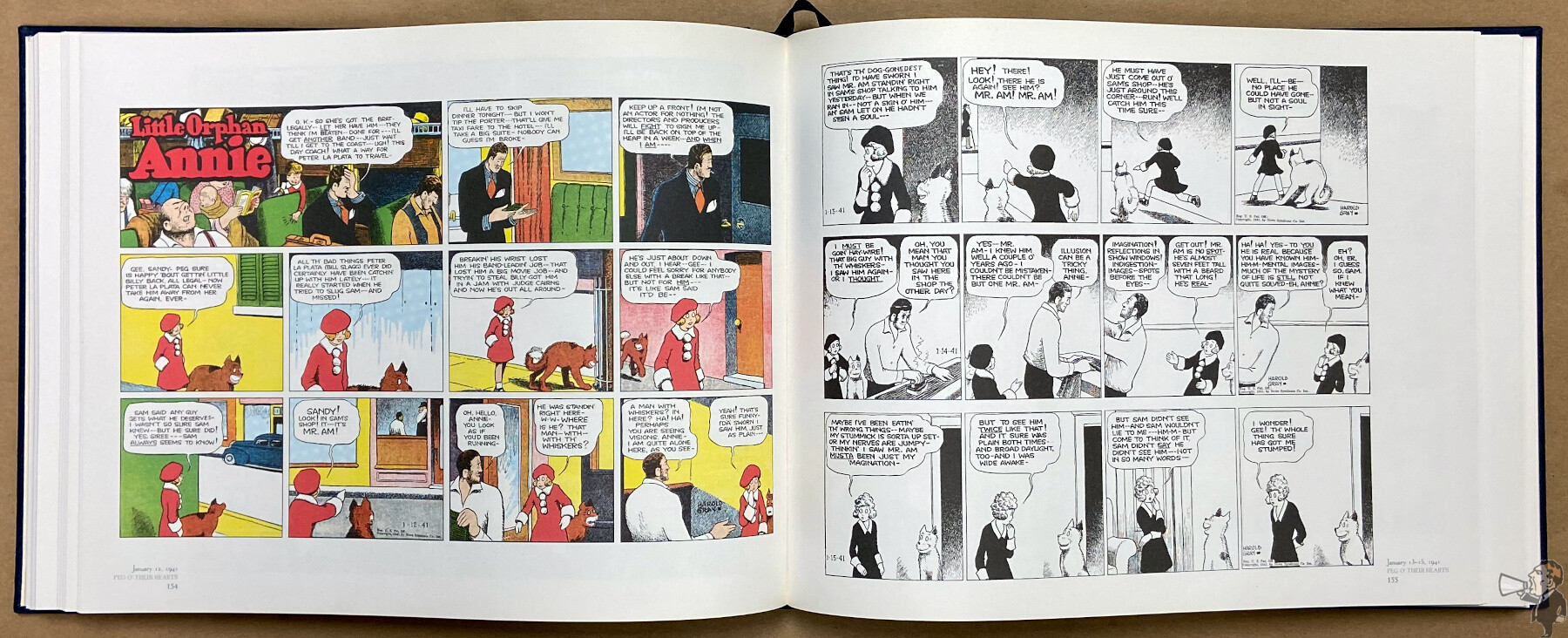
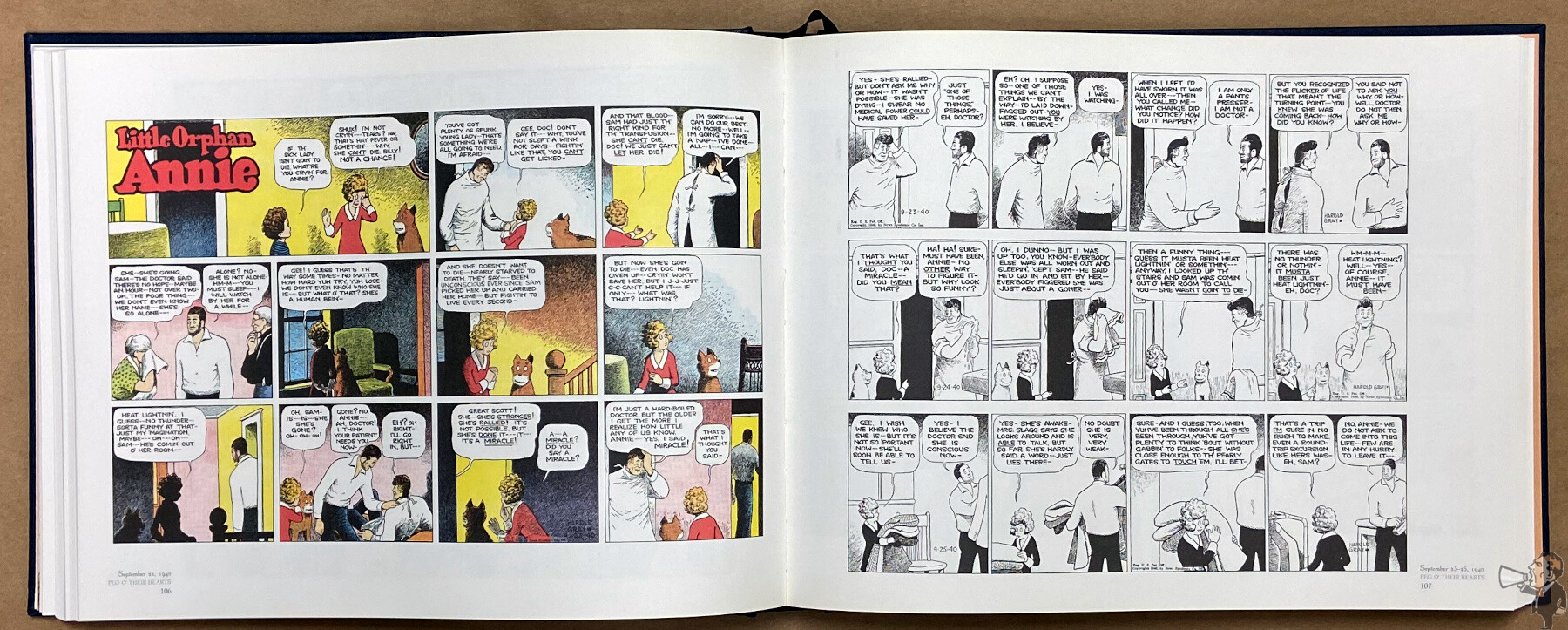
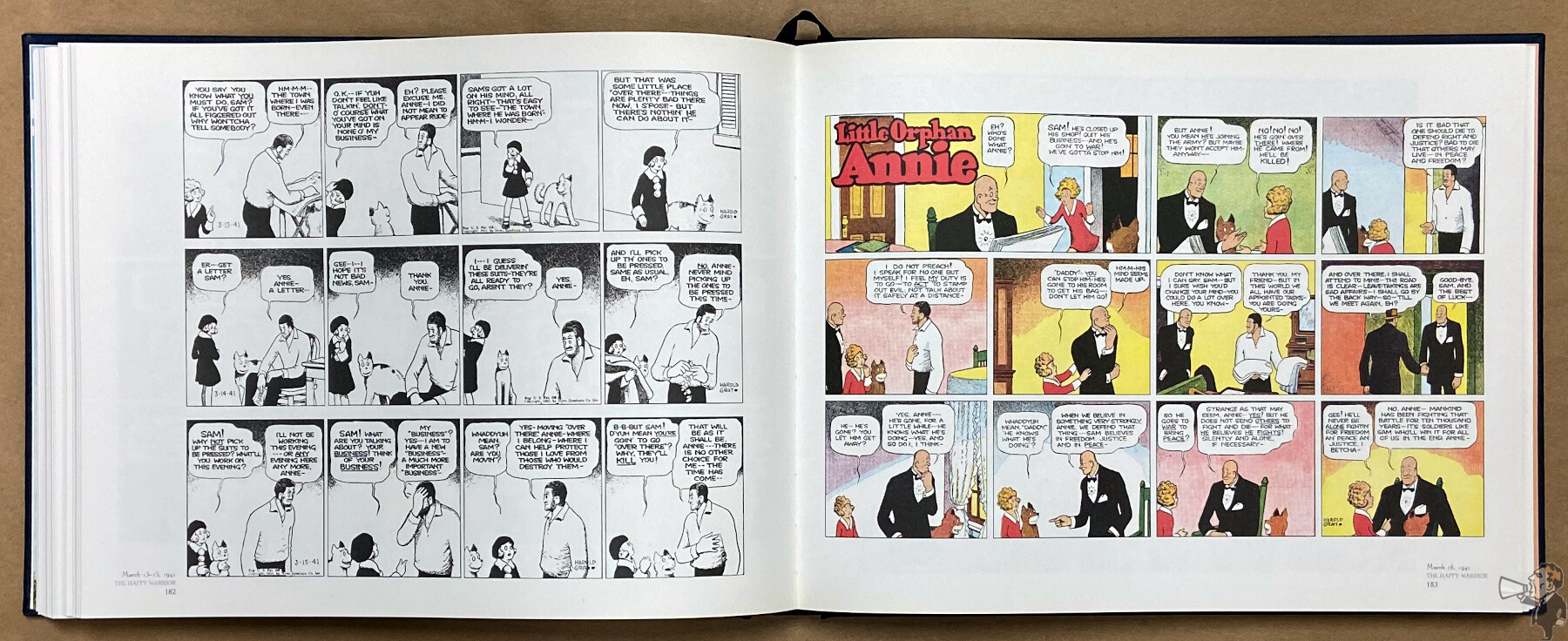
That rolls into a redemption story. We saw something very similar in the last volume. This time it’s “Daddy” giving Peter La Plata a job at the plant, fifth column agents, and a dastardly accident. After surgery, our villain turns to good and in fact makes good. The last daily sees Annie discussing friends and those left behind, really summing up Annie’s journey through the strip. In the early days, Annie would revisit past characters, but the last several years they are dropped to make way for new adventures. If Gray wasn’t willing to bring back old characters he seems to revisit circumstances and storylines.
The final chapter features Punjab as an active main character as he and “Daddy” with Annie and Sandy go for a vacation in the mountains to investigate a mine. While it was great to see Punjab in every strip, he was disguised as an Indian and Gray used broken and halting English for all the Native American speech, every bit the stereotype. But only when around others who were not Native American. Punjab slips into it while in character so he can play the part. We also get something similar from Bull, an Irish character. Were these stereotypes expected from readers in 1940?
Oddly, “The story so far” that leads before the strips has been dropped this volume. I’ve been fortunate to have all the Annie volumes and read them one after another, but this feature was a nice refresher of what has happened in the strip.
It’s striking me more and more how rigid Gray’s page structure was. Those dailies are all built with four panels, and the Sundays are three stacks of four-panel rows with the first panel a double for the logo. Day in, day out. Yet it’s not distracting or limiting to the layout and rhythm of the story. Gray knew it well and lived within it.
The production is top notch: a sewn binding of thick matter paper stock. Plus a silk ribbon! To counter my delight there is a dust jacket that just gets in the way because of the landscape format.
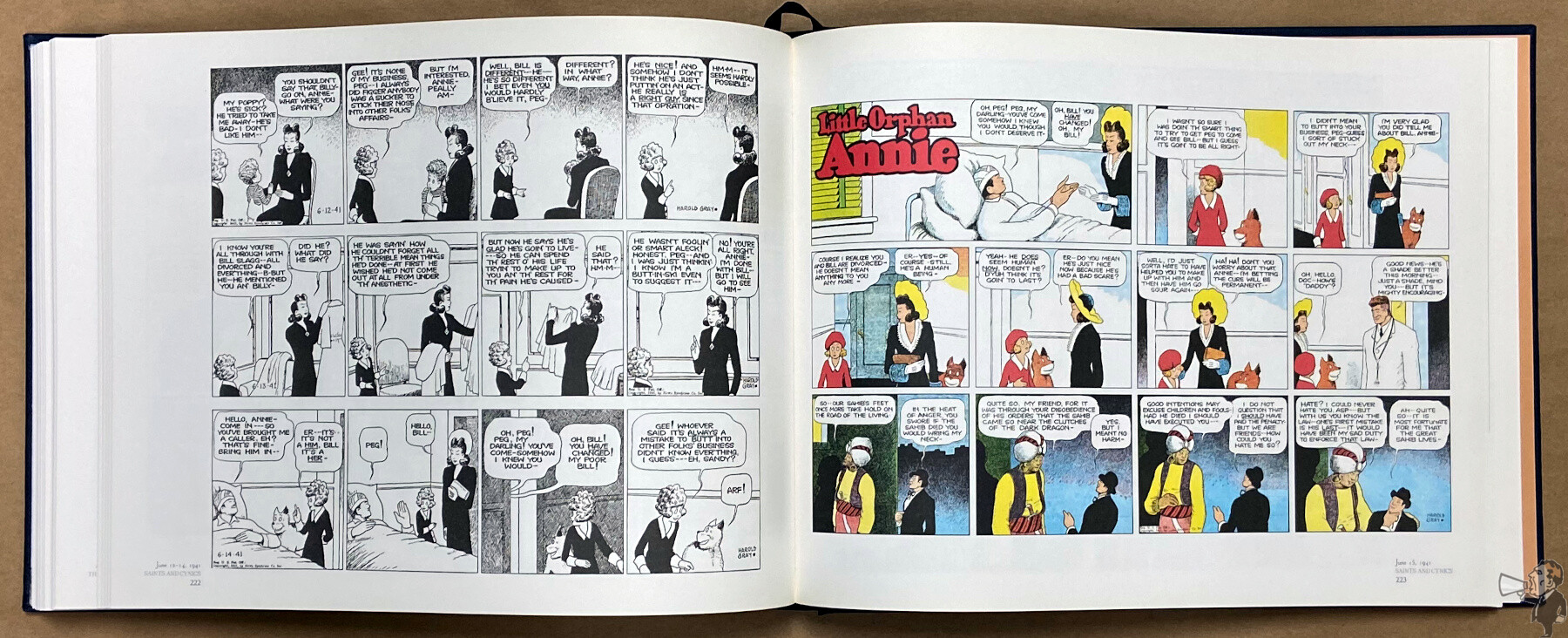
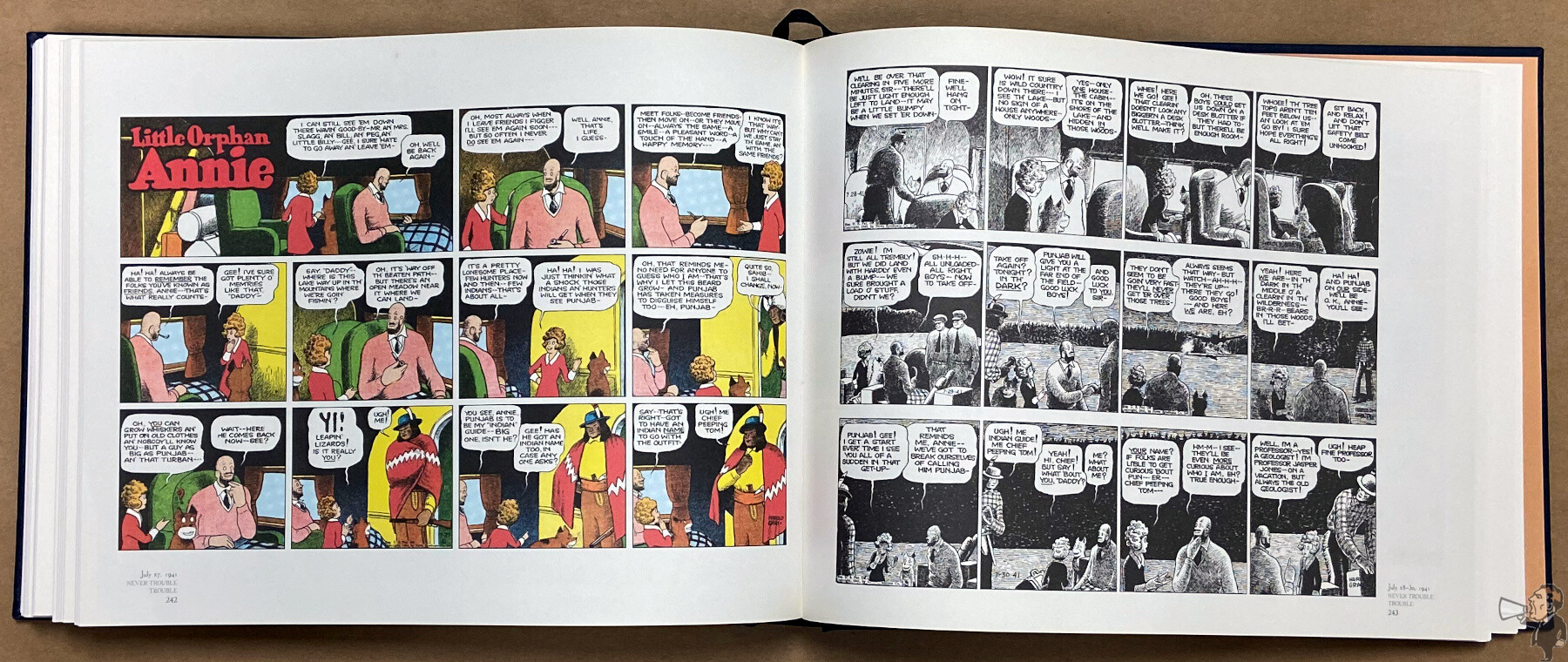
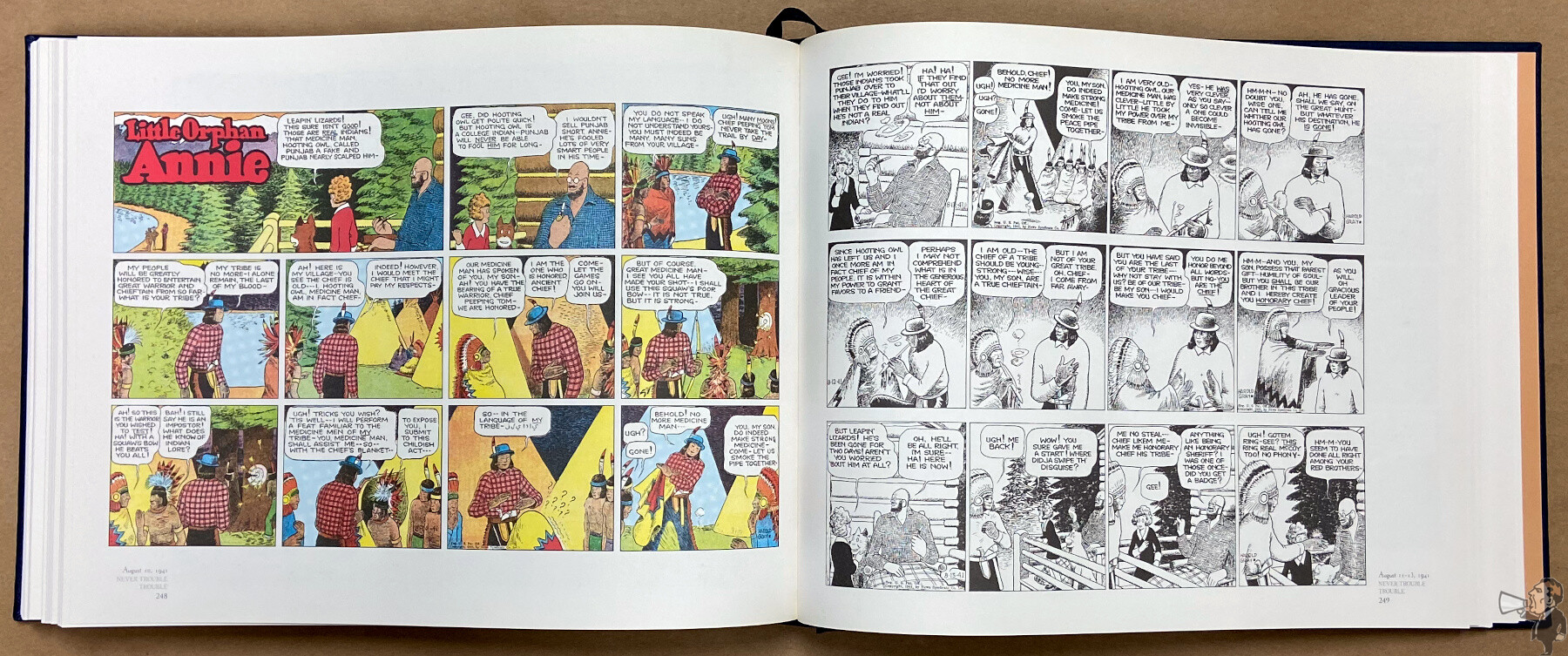
Jeet Heer’s introduction, best read after finishing the strips, deals with most of my questions and thoughts about this volume. He delves into Gray’s politics and beliefs during this time, Axel and Sam, and more. This “Despair and hope in wartime” essay exceptionally compliments the included work.
A few words and expressions made an impact on me in this volume, most notably “chee” (page 39) which appears to be a replacement for “gee” or vice versa. A character worked in a “hash-house” (page 88) which appears to be a greasy spoon or low-cost diner. Annie said repeatedly “borrowing trouble” (page 143) which is a great expression for taking on trouble unnecessarily. But my favourite word in this volume is “spiflicated” (page 124) which means to overcome by violence. There’s a lot of spiflication in Annie.
This time around I wrote my impressions on each chapter as I finished it, as opposed to writing everything up after completing the book. As well I noted words of interest as I encountered them. Hopefully, these make for a more compelling read.


